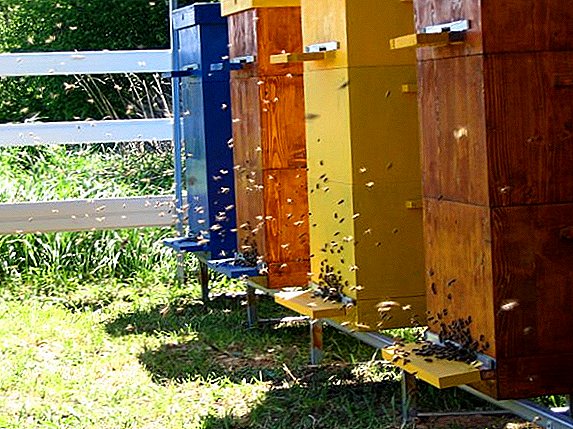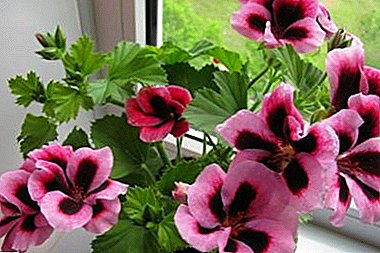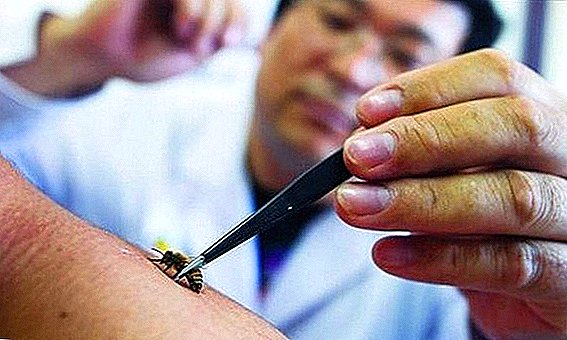
For most people, bees are small annoying creatures that are best avoided. But with some diseases, these insects are just a gift from heaven.
What is it?
Apitherapy, or "bee treatment" (from the Latin word apis, which means "bee") is an alternative treatment using various beekeeping products, such as the introduction of bee venom, the use of pollen, royal jelly, propolis and wax.
But most often the word "apitherapy" refers to exactly the treatment with bee venom. Inject poison in two ways:
Traditional With a good tolerance of poison by humans, up to several dozen bees are taken with tweezers and applied to the diseased area. Since the bee dies after the loss of a sting, an improved method has recently begun to apply — a thin steel mesh is placed on the sting point, in which case the bee can remove the sting from the skin, remain alive, and in two or three days it will restore the venom’s stock.
An hour later, the sting is removed. A total course of therapy can consist of up to 180 stings.
Modern. In this case, the doctor injects a poison extract at the desired points with a syringe.
In addition, the poison can be injected into the skin using electrophoresis and under the action of ultrasound, rubbed in the form of an ointment, inhaled as part of inhalation mixtures and taken in the form of sublingual tablets.
Find out what properties have and how different bee products are used: bee pollen, poison and pollen, zabrus, royal jelly (adsorbed).
A bit of history
Bee venom has been used in medical practice for thousands of years, perhaps this method of treatment originated at the same time as humanity itself - images of bees used to treat diseases can be found even in rock painting.  Apitherapy was well developed in antiquity - sting points, dosages, under which diseases bee venom is useful, and under which it cannot be used. The doctors of the Great Civilizations - ancient Egypt, Greece, China, the healers of Sumer and other states of the Middle East widely used the treatment of bee stings. Bee treatment is mentioned in Indian sacred texts and in the Bible.
Apitherapy was well developed in antiquity - sting points, dosages, under which diseases bee venom is useful, and under which it cannot be used. The doctors of the Great Civilizations - ancient Egypt, Greece, China, the healers of Sumer and other states of the Middle East widely used the treatment of bee stings. Bee treatment is mentioned in Indian sacred texts and in the Bible.
Hippocrates, for example, highly appreciated the healing properties of bees, and in his notes there are recommendations for using bees to relieve pain, alleviate the symptoms of arthritis and other problems with joints. Pliny writes about the same thing, stating that such treatment reduces swelling, heals wounds and reduces pain.
In 1888, the modern history of apitherapy begins - as the treatment with bee venom at that time is called - Austrian doctor Philip Tertz presents a report at the University of Vienna "On the effect of bees stings on rheumatism." 
Bee venom treatment is only part of apitherapy, often treatment is carried out by combining several bee products at once. Depending on the disease, other ingredients are sometimes added to them, most often - essential oils.
Did you know? Ivan the Terrible and Charlemagne, who suffered from severe rheumatism, treated this disease with bee venom.
Beneficial features
Products extracted from a beehive contain complex complexes of biologically active substances, and bee venom is not an exception. For example, more than half of its composition - proteins melitin and adolapin - with anti-inflammatory action is 100 times stronger than hydrocortisone, but not having its side effects.
In many cases, apitherapy can achieve success in the treatment of degenerative tissue diseases in which standard pharmaceutical preparations lead only to partial success. This is because bee venom contains several groups of substances that produce a pronounced anesthetic effect, have an antitumor and wound-healing effect, stimulate the immune system, normalize the function of the endocrine glands.
Important! During the course of treatment, provide yourself with enough vitamins, especially vitamin C - this allows you to achieve better results.
What is treated with apitherapy: indications
Apitherapy is a scientifically based method of treatment and has well-defined indications for use. 
The beneficial effect on the body and an extensive list of symptoms that facilitates the use of bee venom, as well as the fact that the method is practically safe in terms of the onset of acute and chronic side effects, put apitherapy among the best auxiliary methods in the treatment of a number of serious diseases.
We advise you to read about the beneficial properties of different types of honey: May, acacia, linden, rapeseed, buckwheat, chestnut, hawthorn, sweet tartar, white, espartsetovy, phacelia, coriander, boiled, acacia.The group of diseases for the treatment of which is especially often resorted to bee venom include:
- multiple sclerosis - bee venom relieves its symptoms such as muscular fatigue, cramps, weakening of skeletal muscles;
- rheumatoid arthritis, osteoarthritis, bursitis, other diseases of the joints and spine, accompanied by pain, inflammation and impaired mobility;
- tendonitis (inflammation of the ligaments) and other diseases of connective tissues;
- acute and chronic pains in fibromyalgia, shingles, postherpetic neuralgia, Lou Gehrig's disease;
- cicatricial changes, painful and keloid scars;
- hyperthyroidism (goiter);
- various allergic conditions, including hay fever, in which bee venom serves as a means of immunotherapy.
Did you know? Melitin, the main component of bee venom, can suppress the spread of the AIDS virus in the body.
Contraindications
Like any other method, treatment by bees is not a panacea, its use is undeniable, but it can also cause harm. 
Contraindications to apitherapy are children's age, pregnancy and increased individual sensitivity to bee venom.
In addition, apitherapy is contraindicated in infectious and mental diseases, severe disorders of the heart and circulatory system, exacerbation of liver and kidney diseases, hematopoietic disorders, general exhaustion, cancer and other serious chronic diseases.
Important! Before you start apitherapy, you should consult with your doctor and conduct an allergic sensitivity test to bee venom!Someday we will finally understand how and why bee venom has such a beneficial effect, and find out what other diseases can be cured, if we apply the treatment of bees. But even now we know that with a multitude of diseases, the benefits of apitherapy are obvious, it remains only to wish: “Use poison on health!”.












